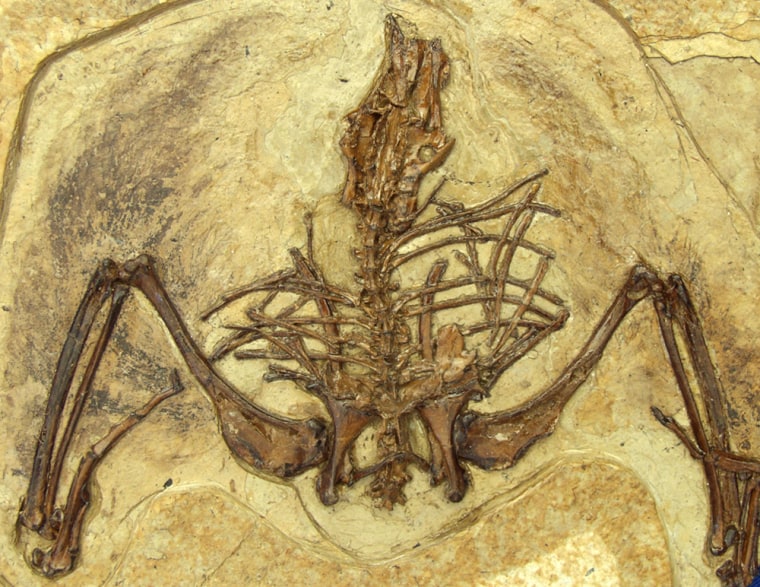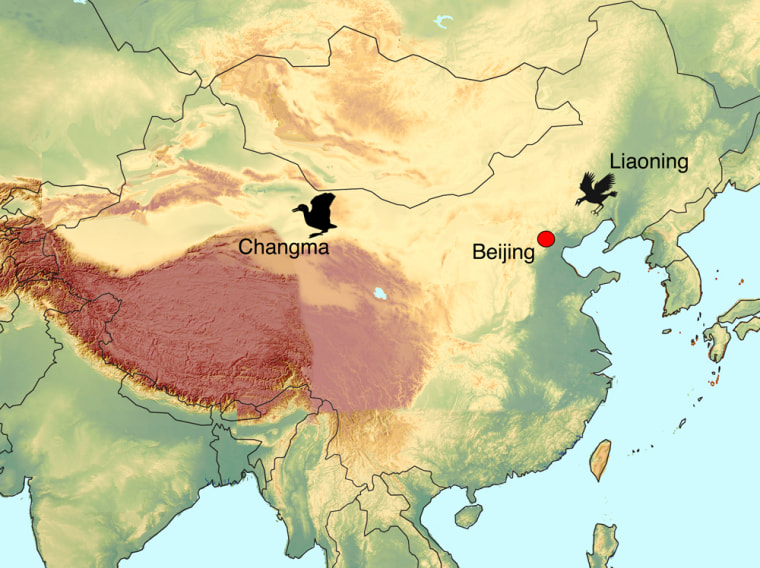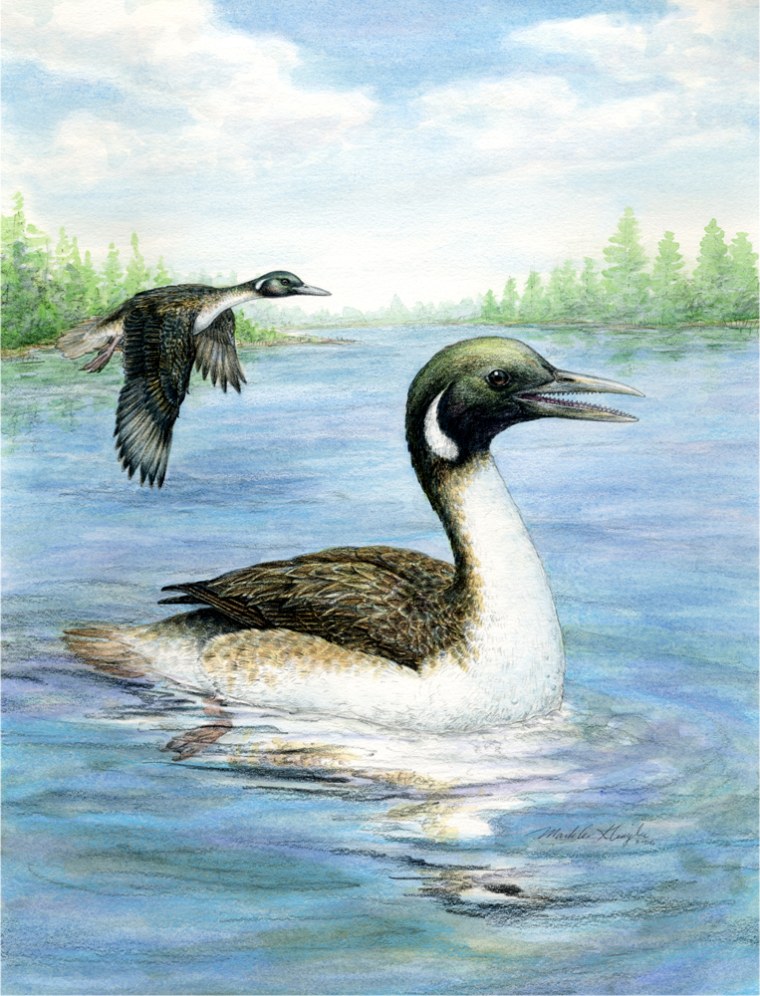Dozens of fossils of an ancient loonlike creature that some say is the missing link in bird evolution have been discovered in northwest China.
The remains of 40 of the nearly modern amphibious birds, so well-preserved that some even have their feathers, were found in Gansu province, researchers report in Friday’s issue of the journal Science. Previously only a single leg of the creature, known as Gansus yumenensis, had been found.
“Gansus is a missing link in bird evolution,” said Matt Lamanna of the Carnegie Museum of Natural History in Pittsburgh.
“Most of the ancestors of birds from the age of dinosaurs are members of groups that died out and left no modern descendants. But Gansus led to modern birds, so it’s a link between primitive birds and those we see today,” Lamanna, a co-leader of the research team, said in a telephone interview.
It was about the size of a modern pigeon, but similar to loons or diving ducks, he explained, and one of the fossils even has skin preserved between the toes, showing that it had webbed feet.
“We were lucky far beyond our expectations” in finding these fossils, Hai-lu You of the Chinese Academy of Geological Sciences said at a briefing Thursday.
“A world lost for more than 100 million years was being revealed to us,” he said.
Filling in a missing link
Previously there was a gap between ancient and modern species of birds, and “Gansus fits perfectly into this gap,” said Jerald D. Harris of Dixie State College in Utah.
“Gansus is the oldest example of the nearly modern birds that branched off of the trunk of the family tree that began with the famous proto-bird Archaeopteryx,” said Peter Dodson of the University of Pennsylvania, a co-author of the paper along with Lamanna, You and others.
The remains were dated to about 110 million years ago, making them the oldest for the group Ornithurae, which includes all modern birds and their closest extinct relatives. Previously, the oldest known fossils from this group were from about 99 million years ago.

The fact that Gansus was aquatic indicates that modern birds may have evolved from animals that originated in aquatic environments, the researchers said.
“Our new specimens are extremely well-preserved, with some even including feathers,” Lamanna said. “Because these fossils are in such good condition, they’ve enabled us to reconstruct the appearance and relationships of Gansus with a high degree of precision. They provide new and important insight into the evolutionary transformation of carnivorous dinosaurs into the birds we know today.”
Found in ancient lake
The remains were found in an ancient lake bed near the town of Changma. Researchers split open slabs of mudstone to find them. It was like turning the pages of a book, Lamanna said.
“We went to Changma hoping that we’d discover one, maybe two, fragments of fossil birds,” he said. “Instead, we found dozens, including some almost complete skeletons with soft tissues. We were successful beyond our wildest dreams.”

The new fossil material “is remarkable for its excellent preservation and establishes that Gansus is an early member of the Ornithurae. ... The new fossils demonstrate that Gansus clearly is a bird that spent much of its life looking for food in water,” commented Hans-Dieter Sues, associate director for research and collections at the Smithsonian’s National Museum of Natural History.
Gansus is an additional “link in a long chain of intermediate forms between Archaeopteryx, the oldest known bird from the late Jurassic, and modern birds,” said Sues, who was not part of Lamanna’s research team.
Tastes like chicken
Funding for the research was provided by the Discovery Quest program for The Science Channel, Carnegie Museum of Natural History, Dixie State College of Utah, the Chinese Geological Survey and the Ministry of Science and Technology of China.
At one point during the field work, Lamanna told his colleagues he would eat a duck foot if they found the fossil they were seeking while the television camera crew was still there.
So, did they?
“It tasted sort of like chicken, but real rubbery,” he recalled.
